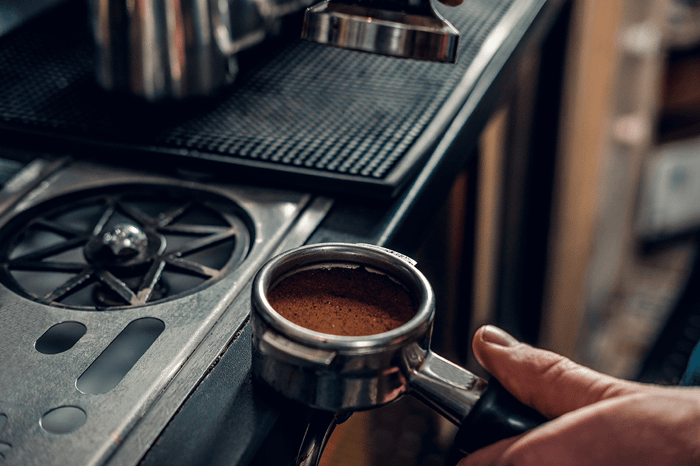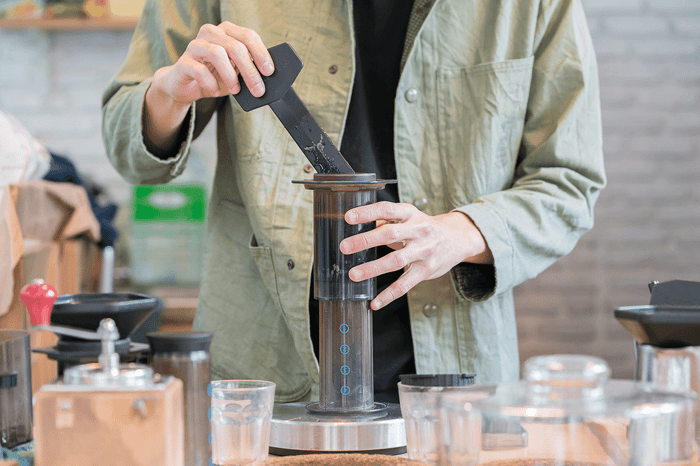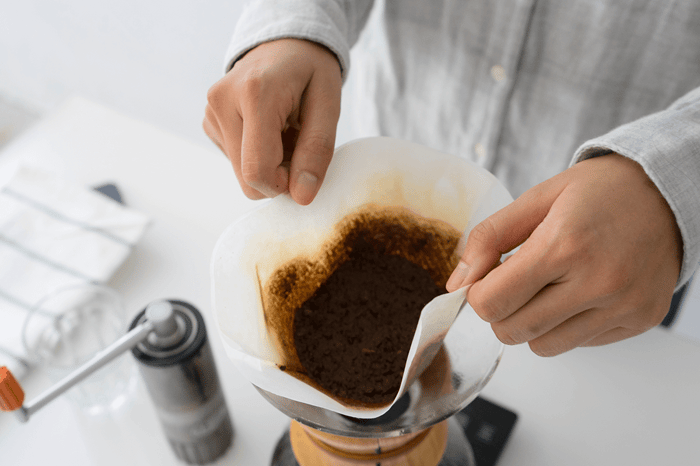
Most people are perfectly happy to buy pre-ground coffee (not that there’s nothing wrong with that).
But since you wound up here, you’re probably ready to take your coffee game to the next level.
If so, this quick guide to coffee grinders can help you select the right tool to fill out your coffee making arsenal.
Types of Coffee Grinders
Broadly, most coffee grinders marketed for home use will be advertised as one of two types, blade, or burr.
If an inexpensive grinder doesn’t outright refer to itself as a “blade grinder,” there’s a good chance it is—a burr grinder is a higher-end type, so it’ll usually want you to know it’s a burr grinder.
Want to learn a bit about the differences between these two kinds of coffee grinders? Well, you’re in luck—that’s exactly what I’m here for!

Blade Grinders
If you’ve seen the blades at the bottom of a blender, or a food processor, or a boat propeller, the blades in a blade coffee grinder are fairly similar.
Blade grinders aren’t the most “consistent” in their consistency. That is, there tends to be a lot of variation in the grind size throughout each batch. There’s also less control over the consistency in general, since the fineness is controlled by the length of time the grinder operates.
Why might you want to use a blade grinder? Well, mostly because they’re cheap (and more disposable).
This doesn’t mean that mid-range and high-end blade grinders (i.e. Cuisinart, Capresso) will necessarily break down that often. But they generally don’t last as long as more expensive burr coffee grinders.
Low-end blade grinders (i.e. Mainstays) may end up lasting a long time, or not. It’s kind of luck of the draw.
If you’re considering a sub-low-end blade grinder, like one of the 4 million rebranded grinders on Amazon and eBay sold by sellers with procedurally-generated names like “DmqofwjqHi” and “Quellegeance” and “BOAN CITY”... just don’t.
If you need a cheap grinder that’s likely to last a long time, look for a Hamilton Beach.
The upside to all blade grinders is that they’re not usually that expensive—so if you do have an issue somewhere down the road, it’s not as big of a deal to replace a $30 - $50 blade grinder compared to a $150 burr grinder.
Reasons you might not want to use a blade grinder include that they can be messy, and they’re usually more difficult to clean up. The coffee being spun around by the blades gets charged with static electricity, making it that much more difficult to clean out the machine.

Burr Grinders
Conical burr grinders use a couple of cone-shaped burrs to crush coffee beans down to a perfect, uniform consistency. Flat plate burr grinders use a couple of serrated plates/rings to accomplish the same thing.
Both of them have one burr/plate move around while the other remains stationary. The coffee beans get pulled in between them and due to the ridges/serration, they get ground down to a uniform consistency.
Commercial quality grinders will generally be burr grinders of some type. Both types work well for what they do, so there’s no real reason to choose one type of burr grinder over the other type.
What’s so great about burr grinders compared to the cheaper blade grinders?
Besides being able to achieve uniform consistency so you don’t have to worry about big chunks remaining in your “fine” coffee grinds and vice versa, you can usually just press a button or turn a dial to select the grind you want.
Since the fineness/coarseness isn’t related to the amount of time you grind, there’s no more guesswork and checking the consistency every couple seconds. The machine will just output the correct grind size for your application (after you set it, of course).
If you and your family members use the same brewing method at home most of the time, you can just leave those settings in place. Always use an AeroPress, or French Press, or pour over, or drip? Then you might never have to change the settings after they’re dialed in properly.





